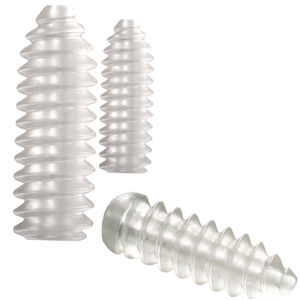The Science Behind Bio-absorbable Bone Screws: How They Work and Their Potential
 |
| Bio-absorbable Bone Screws |
A form of surgical implant used in orthopedic
procedures to connect or mend bones is called a bio-absorbable bone screw.
Bio-absorbable screws dissolve over time, leaving no trace behind, unlike
conventional metal screws that stay in the body forever. These screws are
constructed of biocompatible substances, such as polylactic acid (PLA) or
polyglycolic acid (PGA), that the body may naturally absorb.
Traditional screws have various advantages over
Bio-absorbable
Bone Screws. They eliminate the need for a second operation to remove the
implant, lowering the danger of infection and speeding up the patient's
recuperation because they gradually disintegrate. Second, they rule out the
potential of metal poisoning or allergies. Thirdly, the ability of the bone to
rebuild when the screw dissolves can aid in the healing process.
Surgical procedures involving tiny bones, such
as those in the hands, foot, and face, as well as various joint procedures,
including shoulder surgery, frequently employ bio-absorbable screws. They are
frequently used to keep bones in position while they recover or to mend broken
bones.
Bio-absorbable screws are inserted in a manner
akin to conventional screws. The surgeon prepares the bone before drilling a
hole into it and inserting the screw. Once the screw is in situ, it will keep
the bone firmly in place and permit healing. The bone will continue to
organically mend and develop when the screw progressively disintegrates.
The usage of bio-absorbable screws has
significant restrictions in addition to the advantages they have over
conventional metal screws. Due to their lower strength compared to metal
screws, bio-absorbable screws should not be used in weight-bearing joints or
other high-stress locations like the spine. They may not be covered by all
insurance policies as they are more expensive than conventional screws.
Bio-absorbable Bone Screws are an innovative
alternative to traditional metal screws for joining and fixing bones. They
offer several benefits, such as reducing the need for a second surgery and
eliminating the possibility of metal allergies or toxicity. However, they are
not suitable for use in high-stress areas and may be more expensive.
Ultimately, the decision to use bio-absorbable screws should be made by the
patient and their surgeon based on the specific circumstances of their surgery.



Comments
Post a Comment